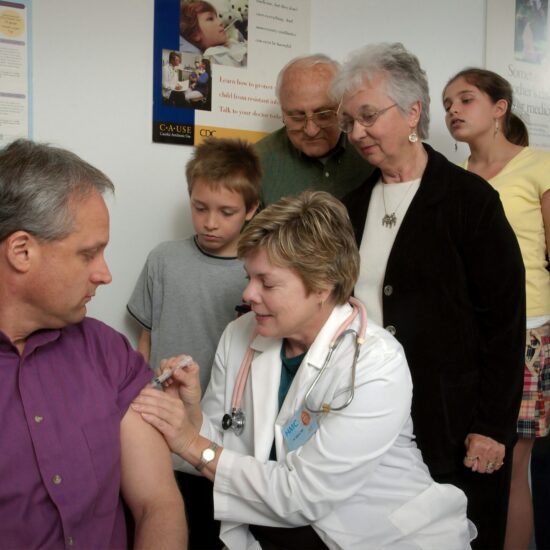
In 2014, the Ebola outbreak was storming through West Africa and found its way to the United States via four patients medically evacuated to the United States for treatment. Then, Thomas Eric Duncan, a Liberian man visiting family in Texas, showed early symptoms of Ebola. Initially misdiagnosed before more severe symptoms developed, Duncan then was hospitalized and eventually died at Texas Health Presbyterian Hospital. Nina Phan, a nurse who cared for Duncan, made headlines when she was diagnosed with Ebola herself.
Unless the story focused on health care workers’ potential exposure and protective equipment, American journalists rarely included nurses in their stories about Ebola before Phan came down with the disease. After that, journalists could not get enough interviews with nurses and representatives of nursing organizations. When the Ebola story receded from the headlines, press inquiries stopped. Diana Mason, a co-author of this blog, was president of the American Academy of Nursing at that time and saw the difference in media requests for interviews.
The underrepresentation of nurses in health news didn’t just occur during Ebola crises. We recently reported on the high-level preliminary findings of two phases of a study, “The Woodhull Study Revisited: Nurses Representation in Health News Stories,” about how often nurses are represented in health news stories They have significant implications for health journalists who are not diversifying their sources. While the study focuses on nurses, the findings also apply to health professionals other than physicians.
The findings were scheduled to be presented at a May 8 press conference at the National Press Club in Washington, D.C.
“Woodhull Study Revisited” replicates a 1998 study named after Nancy Woodhull a USA Today founding editor who was concerned about the underrepresentation of women in media, including nurses. The original study found that nurses were included as sources in only 4 percent of health news stories in September 1997 in two leading national newspapers and five metro dailies; and less than 1 percent of the time in four news magazines and five health industry publications. Nurses rarely were mentioned as health news sources, even though they would have been germane to the story or identified in photos accompanying the news stories.
Twenty years later, we worked with the Berkeley Media Studies Group to examine health news stories from September 2017 in the same publications (some are no longer in print but are online) and found that nothing has changed. The stories we examined included nurses as sources only 2 percent of the time, although the difference in the 20 years was not statistically significant. When used as sources, it most often was in stories about labor, the profession itself (such as the scope of practice), quality or education. Nurses seldom were included in stories on research (9 percent), policy (4 percent), or business (3 percent).
Perhaps more telling was the second phase of the study, in which we interviewed 10 health journalists about their experiences with using nurses as sources. Our preliminary findings suggest that bias exists in sourcing for health news.
This post is by Diana Mason and Barbara Glickstein and was originally published as “Underrepresentation of nurses in health care coverage continues to be a concern,” in Covering Health: Monitoring the Pulse of Health Care Journalism on May 8, 2018, and reposted here with permission. Continue reading here.








